Introduction to Symposium on Peter Conti-Brown & Sean Vanatta’s Private Finance, Public Power: A History of Bank Supervision in America, by Brian D. Feinstein
This post introduces Notice & Comment’s symposium on Peter Conti-Brown and Sean Vanatta’s Private Finance, Public Power: A History of Bank Supervision in America. For other posts in the series, click here.
Bank supervision resists easy categorization. Sometimes, supervisors resemble cops on the beat, enforcing laws and pursuing violators. At other times, they are akin to public-health inspectors, detecting unsafe conditions and calling for intervention before harm spreads. They also act as accountants, auditors, and management consultants.
Across history, their core task—risk management—has shifted focus: preventing bank failures (and protecting counterparties when failures occur), safeguarding depositors, maintaining macroeconomic stability, or juggling “political” duties such as merger review, consumer protection, and community reinvestment. Supervisors act in the public interest—as they must, given the unique residual risks that banking offloads to society—but at times also to further private interests, collaborating with banks in ways that benefit both those institutions and the overall financial system. And they do all this within an alphabet soup of federal and state agencies.
Who designed such a byzantine system?
No one. As Conti-Brown and Vanatta show, our supervisory architecture emerged through “experimentation, error, and the slow building of sometimes redundant, often warring institutions.” New structures were layered atop existing ones in response to historical contingencies, often with ambitious policy entrepreneurs leading the charge. The result is “a system that creaks and groans as mismatched parts, crafted at different times for different purposes.” Yet this is no Frankenstein’s monster. The authors argue that this process “yielded a mechanism for risk management that mostly worked.”
Private Finance, Public Power tells this story. It is an impressive achievement: a deeply researched work of institutional stratigraphy that contributes to several high-impact debates.
For judges examining the extent to which congressional delegations of authority are consistent with our history and tradition, Conti-Brown and Vanatta show that strong agencies have exercised discretion over one of the economy’s most critical sectors since the 1860s. For those judges that are skeptical of “novel” institutional arrangements, Conti-Brown and Vanatta’s book shows that—in a world in which institution-building is shaped by contingency—novelty is the norm.
For legal historians and scholars of American political development, Private Finance, Public Power deepens our understanding of subjects ranging from the “lost world” of 19th century administrative law to the role of issue entrepreneurs in driving policy change.
For administrative lawyers, it is reminder to look beyond casebook accounts of regulation and examine the myriad creative ways in which agencies make policy. And for students of these subjects, Private Finance, Public Power offers a model on how to explain complex phenomena in ways that engage readers, without resorting to Whig history or just-so accounts.
Incidentally, it’s also a rollicking read—chock-full of rogues plundering failed banks, “bunco boy” con artists posing as examiners, and bribes paid in oyster dinners. And for all the romantics in Notice & Comment’s readership, there’s even some poetry: “With all his sharpness he couldn’t see / How the bank was mismanaged by me …” (excerpt from “Song of the Fugitive Bank Cashier,” Life Magazine, 1884).
For me, the book’s most fascinating throughline involves how savvy officials transformed flimsy legislative frameworks into powerful supervisory agencies. Hugh McCulloch, the first Comptroller of the Currency (1863-1865), recognized that the power to charter banks need not be a ministerial function, but could justify an institutionalized system for continuous oversight of chartered banks. Decades later, Comptroller Lawrence Murray (1908-1913) understood that, even when threats to close a bank—one of the OCC’s few statutory authorities at the time—were not credible, he could still pressure banks through his control over the timing and frequency of supervisory visits.
Personnel practices also served as tools of institution-building. McCulloch hired supervisors with political connections and financial experience to strengthen his fledging agency. Granting examiners a remarkable degree of discretion could serve as a form of compensation; “we can’t pay you well, but you’ll do impactful work” can be a siren song.
Through these and other examples, skilled executive-branch policy entrepreneurs acted time and again to strengthen the supervisory regime. Congress sometimes played catch-up, authorizing activities that these entrepreneurial leaders had already taken up. Placing agency officials in the driver’s seat is a hallmark of historical-institutionalist accounts of the U.S. administrative state, like Conti-Brown and Vanatta’s. Institution-building is the subject of these accounts. Yet a policy entrepreneur with very different aims could use the same toolkit—e.g., remaking an agency through personnel practices, using high-stakes statutory powers as leverage on lower-stakes matters, etc.—to dismantle as well as build.
Conti-Brown and Vanatta are too careful as historians to indulge in that kind of presentism, so I will likewise refrain—and turn instead to introducing this fantastic symposium. Given the book’s breadth and significance, we are fortunate to feature contributions from a diverse and esteemed group of scholars:
- Kathryn Judge, Columbia Law School
- Jeremy Kress, University of Michigan Ross School of Business
- Naomi Lamoreaux, University of Michigan Law School, Yale University Department of History, and NBER
- Jonathan Macey, Yale Law School
- Nicholas Parillo, Yale Law School
- Paul Tucker, Harvard Kennedy School
- Yesha Yadav, Vanderbilt Law School
- Chris Walker, University of Michigan Law School
And, of course, we will hear from Peter and Sean as well. We hope you enjoy this symposium on their landmark new book.
Brian D. Feinstein is an Associate Professor of Legal Studies & Business Ethics at the Wharton School of the University of Pennsylvania.



